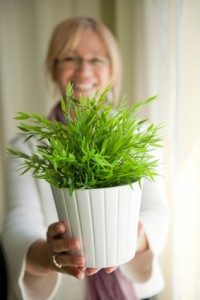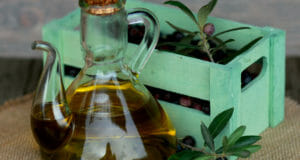 NASA is not just about space exploration. The National Aeronautic and Space Administration has given us some very useful products. The research done by NASA scientists over the years has led to many “spin offs.” These are products, ideas, and materials that came from research conducted by NASA and include invisible braces, memory foam, scratch-resistant lenses, shoe insoles, and water filters. Now, thanks to NASA scientists, we have proof that house plants purify the air in our homes. We even have a ranking system to determine which plants do the job the best.
NASA is not just about space exploration. The National Aeronautic and Space Administration has given us some very useful products. The research done by NASA scientists over the years has led to many “spin offs.” These are products, ideas, and materials that came from research conducted by NASA and include invisible braces, memory foam, scratch-resistant lenses, shoe insoles, and water filters. Now, thanks to NASA scientists, we have proof that house plants purify the air in our homes. We even have a ranking system to determine which plants do the job the best.
Sick Building Syndrome
Why would you need to improve your indoor air? Because you may have sick building syndrome, or SBS. SBS is recognized by the Environmental Protection Agency as a real situation in which conditions inside a building make people physically ill. It can affect people in one room or an entire building. Indications that you may be suffering from SBS include headache, irritation of the eyes, nose, or throat, coughing, itchy skin, dizziness, nausea, fatigue, and difficulty concentrating. Of course, many things can cause these symptoms, but the key is that the symptoms of SBS affect everyone in your house and that they disappear when you leave the building.
150 Super-Easy Herbal Formulas for Green Cleaning…
SBS occurs mostly in new and recently renovated buildings. Many materials inside your home can contribute to SBS. Carpeting, adhesives, manufactured wood, cleaning agents, upholstery, and more can release compounds into the air that make you feel sick. They give off what are called volatile organic compounds or VOCs. Volatile describes the fact that these compounds can become gaseous and travel through the air easily. This is how they make you sick. Other things that can make you sick in your house are more natural, but just as nasty. Mold and bacteria can breed in your home in the ducts and humidifiers and in your ceiling tiles, insulation, or carpeting.
The reason that newer buildings are more likely to cause SBS symptoms is not just because of newer materials and furniture. Your older home could contain these VOCs too but cause you fewer symptoms. The problem is often ventilation. Newer homes are constructed more securely and with more insulation than older homes to save energy. Because of this, they don’t allow for air to circulate between the outside and the inside. Older homes are “leakier.” When you have VOCs in your older home, their concentrations may be lower because fresh air is getting into the house even when all the windows and doors are shut.
SBS may be an exaggeration for most of us. You likely don’t experience significant symptoms from being in your house. However, that doesn’t mean they aren’t there and they aren’t causing you harm. A study from Harvard found 90 chemicals in 120 different homes in Massachusetts. These included compounds that cause neurological problems, birth defects, cancer, and that mimic hormones. They even found banned substances in the air and the dust of these homes. Currently, there is no research results to tell us how all of these chemicals affect our health over the long run.
Fill Your Home with House Plants
Thanks to NASA’s research, we do know that certain house plants can take some of these chemicals out of the air. So how do they do it? Plants pull air into themselves in two different ways. They take in air through their leaves. Chemicals taken up in this way gradually move down to the roots and out of harm’s way. Plants also pull air in at the roots. Transpiration is a way in which plants release excess water through the tips of their leaves. As water is released from the leaves, air is sucked in at the roots. Microbes that live on the roots of plants take chemicals from the air and turn them into other compounds. Plants that transpire the most are the best air cleaners. They take in more compounds and the roots and convert them into safer chemicals.
The NASA study looked at the ability of fifty common house plants to remove three of the most common indoor toxins from the air:
- Benzene. Found in dyes, detergents, plastics, gasoline, and rubber. It causes eye and skin irritation, respiratory problems, and kidney and liver damage. It is a carcinogen.
- Formaldehyde. Although well-known as a preservative, formaldehyde is in many, many products. You can find it in insulation, grocery bags, clothing, paper towels, and particle board, just to name a few. It causes asthma.
- Trichloroethylene. This compound is found in adhesives and varnishes. It is a liver carcinogen and damages the central nervous system and respiratory tract.
After testing the plants’ abilities to remove these substances from the air, the researchers ranked the plants. The ranking takes into account not just the ability to remove toxins, but also the ease of maintenance and the resistance of the plants to pests. These are the top ten plants in the ranking:
- Areca Palm. NASA’s number one plant for cleaning your air is the Areca palm tree. It received a score of 8.5 for its ability to add moisture to the air. It acts as an excellent humidifier—it can prevent excessively dry air as well as or better than an electric humidifier. When the air is too dry, you can suffer from dry skin, scratchy throat, and sneezing and coughing. The Areca palm also removes toxins like toluene and xylene from the air.
- Lady Palm. The lady palm tree gets the same score as the Areca. It can remove formaldehyde, xylene, toluene, and ammonia from the air while also adding moisture. In addition, the lady palm is very easy to grow. It can tolerate a variety of conditions and is very resistant to any pests that might attack it in your home.
- Bamboo Palm. The bamboo palm comes in at third place on the purifying list. It is really second best at purifying air because the first two palm trees are tied. It removes formaldehyde, xylene, and toluene from the air and is easy to care for. The bamboo palm prefers to have direct sunlight and thrives with moist, but not wet soil, so watering regularly is key.
- Rubber Plant. The rubber plant is an attractive, thick-leaved, large plant that is especially good at removing formaldehyde from the air. It needs less sunlight than many other house plants, which makes it a good choice if you lack windows with direct light. Be cautious with pets and babies, however, as the leaves of the rubber plant are toxic.
- Dracaena. With leaves striped in dark and light green, dracaena is a beautiful as well as purifying houseplant. It is sometimes also called the female dragon or Janet Craig and excels at taking formaldehyde out of the air as well as benzene, toluene, and xylene.
- English Ivy. Ivy is a lovely climbing vine that can be grown indoors or out. Give it a wall or trellis to climb and your English ivy will thrive. Not only does this plant remove benzene, xylene, toluene, and formaldehyde from your home’s air, it also removes mold. This makes English Ivy an excellent choice for you if you have allergies. It is known for reducing allergy and asthma symptoms.
- Dwarf Date Palm. The dwarf date palm is an elegant looking plant that removes trichloroethylene, formaldehyde, xylene, and toluene from the surrounding air.
- Ficus Alii. The ficus alii is an easy plant to maintain and one that will remove several toxins from the air in your home. However, touching this plant can irritate people with latex allergies. If you do have a latex allergy, you can still keep this plant, but wear gloves when handling it.
- Boston Fern. A full, bushy plant, the Boston fern is an excellent purifier, removing formaldehyde, toluene, benzene, and xylene. It may also remove some mold spores from the air.
- Peace Lily. All the peace lily will ask from you is plenty of water and a little sunlight. Easy to grow and maintain, the peace lily removes benzene, formaldehyde, trichloroethylene, toluene, and xylene from the air.
Adding house plants to your home is a great and natural way to keep your air cleaner. Especially if you live in a newer house or a recently remodeled one, you need to be aware of the toxins around you. The plants will help, but you should also make a point to spend time outside each day. Also, keep safety in mind when selecting your house plants. Make sure you are aware of which ones may be toxic for pets or small children, or simply keep them out of reach.
©2012 Off the Grid News
 Off The Grid News Better Ideas For Off The Grid Living
Off The Grid News Better Ideas For Off The Grid Living




